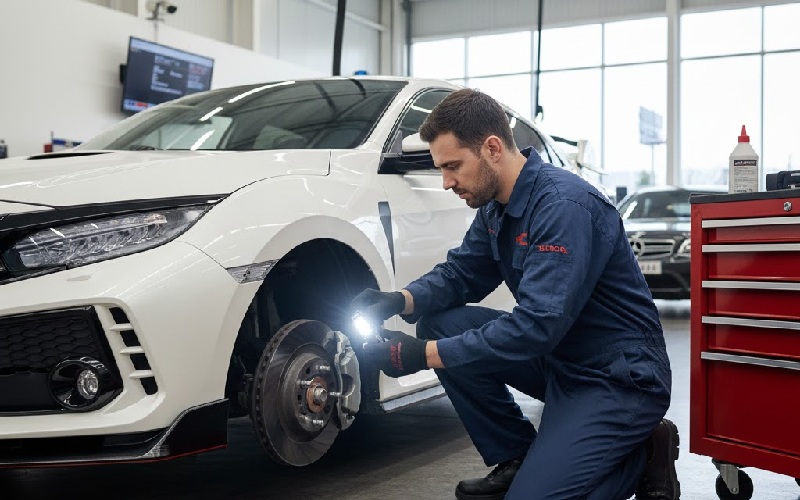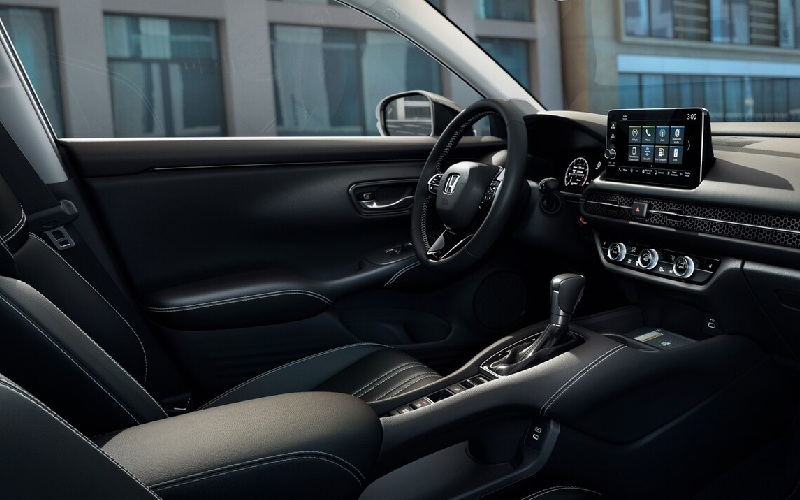The Honda HR-V continues to impress in the competitive subcompact SUV segment with its blend of versatility, efficiency, and technology. Among the many specifications that influence a vehicle’s performance, comfort, and safety, tire size stands out as particularly important. This guide explores everything current and prospective HR-V owners need to know about tire sizes for the latest model, including factory specifications, optional upgrades, seasonal considerations, and maintenance recommendations.

Tire Size Notation
Before examining the specific sizes for the HR-V, it’s helpful to understand the standardized format used to express dimensions. A typical size marking might read: 215/60R17 96H
Breaking down this example:
- 215: The width in millimeters
- /60: The aspect ratio (height of the sidewall as a percentage of the width)
- R: Radial construction
- 17: The wheel diameter in inches
- 96: The load index (indicating maximum load capacity)
- H: The speed rating (indicating maximum sustainable speed)
These specifications collectively determine performance characteristics, including handling, ride comfort, load capacity, and the appropriate speed range.
2025 Honda HR-V Factory Tire Specifications
The HR-V offers different sizes depending on the trim level, allowing Honda to tailor the driving experience to each model variant’s intended character and feature set.
LX Trim
- Standard Size: 215/60R17 96H
- Wheel Size: 17 x 7 inches
- Wheel Material: Aluminum alloy
- Load Index: 96 (710 kg per tire)
- Speed Rating: H (210 km/h)
The LX trim tire specification strikes a balance between comfort, efficiency, and all-weather capability, featuring a moderate sidewall height that provides good impact absorption on rough roads.
Sport Trim
- Standard Size: 225/55R18 98H
- Wheel Size: 18 x 7.5 inches
- Wheel Material: Aluminum alloy (distinctive Sport design)
- Load Index: 98 (750 kg per tire)
- Speed Rating: H (210 km/h)
The Sport trim features a larger-diameter wheel with a wider tire and a slightly lower profile, enhancing visual appeal while providing more responsive handling characteristics.
EX-L Trim
- Standard Size: 215/60R17 96H
- Wheel Size: 17 x 7 inches
- Wheel Material: Aluminum alloy (premium finish)
- Load Index: 96 (710 kg per tire)
- Speed Rating: H (210 km/h)
The premium EX-L trim shares the same tire specifications as the LX but features a more upscale wheel design with a distinctive finish.
All-Season Tire Type
All HR-V models come with all-season tires. These provide acceptable performance across a wide range of conditions, including:
- Dry pavement
- Wet roads
- Light snow
While convenient for year-round use in moderate climates, all-seasons represent a compromise that may not deliver optimal performance in extreme conditions.
Seasonal Tire Considerations
Many HR-V owners opt for different tires based on the season, particularly in regions with distinct winter conditions.
Winter/Snow Tires
For areas with significant snowfall or temperatures that regularly drop below 7°C, winter options provide substantial benefits:
Recommended Winter Sizes:
- For LX and EX-L trims: 215/60R17 or 205/65R16
- For Sport trim: 225/55R18 or 215/60R17
Winter Benefits:
- Enhanced Cold-Weather Traction: Winter compounds remain flexible at lower temperatures
- Improved Snow Performance: Specialized tread patterns with deeper grooves and sipes provide better grip on snow and ice
- Reduced Stopping Distance: Winters can reduce braking distances by up to 30-40% on snow and ice
- Better Control: Improved handling and stability in winter conditions
Winter Identification:
Genuine winter tires display the “Three-Peak Mountain Snowflake” symbol on the sidewall, indicating they meet specific performance requirements in snow testing.
Summer Performance Tires
For regions with mild winters or owners who switch to winters seasonally, summer performance wheels are an option for the warmer months:
Potential Summer Sizes:
- For LX and EX-L trims: 215/60R17 or 225/55R17
- For Sport trim: 225/55R18 or 235/50R18
Summer Characteristics:
- Improved Dry Grip: Specialized compounds and tread patterns maximize traction in warm conditions
- Enhanced Handling: Stiffer sidewalls and tread blocks improve steering response and cornering stability
- Reduced Wet-Weather Performance: Advanced tread designs evacuate water effectively
- Limited Temperature Range: Not suitable for use in near-freezing conditions
Summer options are less common for HR-V owners, but can provide handling benefits for those who prioritize driving dynamics.
Tire Size Alternatives and Modifications
While the factory tire sizes are optimized for the HR-V suspension geometry and performance characteristics, some owners consider alternative sizes for specific benefits or aesthetic preferences.
Acceptable Alternative Sizes
When changing sizes, it’s important to maintain an overall diameter within approximately 3% of the original to prevent speedometer inaccuracy and potential issues with vehicle systems like ABS and stability control.
For the HR-V, acceptable alternative sizes might include:
For 17-inch wheels (LX/EX-L):
- 205/65R17 (slightly taller, narrower)
- 225/55R17 (wider, slightly shorter)
- 215/65R17 (taller)
For 18-inch wheels (Sport):
- 215/60R18 (narrower, slightly taller)
- 235/50R18 (wider, slightly shorter)
- 225/50R18 (shorter)
Plus-Sizing and Minus-Sizing
Plus-Sizing involves increasing wheel diameter while decreasing sidewall height to maintain similar overall diameter:
- Example: Moving from 215/60R17 to 225/50R18
- Benefits: Improved handling, reduced sidewall flex, enhanced appearance
- Drawbacks: Potentially harsher ride, increased vulnerability to damage from potholes
Minus-Sizing involves decreasing wheel diameter while increasing sidewall height:
- Example: Moving from 225/55R18 to 215/65R17
- Benefits: Improved ride comfort, potentially better snow performance, usually less expensive
- Drawbacks: Slightly less precise handling, changed appearance
Minus-sizing is particularly common for winter setups, where the additional sidewall height can help absorb impacts from frost heaves and potholes.
Performance Implications of Tire Size Changes
Changing sizes affects various aspects of the HR-V performance and driving characteristics:
Handling and Stability
- Wide (e.g., 225mm vs. 215mm): Increase the contact patch, potentially improving dry grip, but may increase susceptibility to hydroplaning
- Low Profile (e.g., 55-series vs. 60-series): Reduce sidewall flex, improving steering response and cornering stability
- Larger Diameter Wheels: Typically reduce unsprung weight if made of lightweight materials, improving suspension response
Ride Comfort
- Taller Sidewalls: Act as additional suspension, absorbing road imperfections
- Wide: May transmit more road noise into the cabin
- Low Profile: Provide less cushioning against impacts, potentially creating a firmer ride
Fuel Efficiency
- Wide: Generally increases rolling resistance, potentially reducing fuel economy
- Heavier Wheel/Tire Combinations: Require more energy to accelerate and maintain speed
- Properly Inflated Tires: Regardless of size, maintaining correct pressure is crucial for optimal efficiency
Off-Road and Adverse Condition Performance
The HR-V, while not designed as an off-road vehicle, does offer reasonable capabilities for a subcompact SUV, particularly in AWD configurations:
- Taller Sidewalls: Provide better protection against impacts and allow for lower pressures on soft surfaces
- Wide: Can “float” better on soft surfaces like sand, but may “dig in” more in mud
- Specialized Tread Patterns: All-terrain or winter patterns significantly improve capability in specific conditions
Tire Pressure Recommendations
Proper inflation is critical for safety, performance, and longevity. The HR-V has specific pressure recommendations based on size and vehicle loading:
Standard Pressures:
- Front: 235 kPa (34 PSI)
- Rear: 220 kPa (32 PSI)
Adjusted Pressures for Maximum Load:
- Front: 250 kPa (36 PSI)
- Rear: 250 kPa (36 PSI)
You can find these recommendations on the driver’s doorjamb placard and should be checked monthly with tires cold (not driven for at least three hours).
The HR-V Tire Pressure Monitoring System (TPMS) alerts drivers when pressure drops significantly below recommended levels, but it should not replace regular manual checks, as the warning typically only activates when pressure is already well below optimal.
Tire Rotation Patterns
Regular rotation is essential for maximizing tire life and maintaining consistent handling characteristics. The appropriate rotation pattern depends on whether the HR-V is front-wheel drive or all-wheel drive:
For Front-Wheel Drive HR-V:
- Forward Cross Pattern: Front tires move straight back, rear tires move to the opposite front position
- Rotation Interval: Every 10,000 kilometers
For All-Wheel Drive HR-V:
- X-Pattern: Each tire moves to the opposite diagonal position
- Rotation Interval: Every 8,000-10,000 kilometers
AWD systems typically require more frequent rotation due to the more complex torque distribution that can create different wear patterns.
Tire Technology in the 2025 HR-V
The HR-V benefits from several tire-related technologies that enhance safety and convenience:
Tire Pressure Monitoring System (TPMS)
The HR-V direct TPMS utilizes sensors located inside each wheel to monitor air pressure continuously. This system:
- Alerts drivers when pressure drops 25% or more below the recommended level
- Displays current pressures for each tire in the instrument cluster (on higher trims)
- Requires recalibration after rotation or replacement
Temporary Spare Tire
Unlike some modern vehicles that include only tire repair kits, the HR-V includes a temporary spare tire:
- Spare Size: T135/90D16
- Maximum Speed Rating: 80 km/h
- Maximum Distance: 80 kilometers
- Inflation Pressure: 420 kPa (60 PSI)
This compact spare saves space while providing a reliable emergency solution. It’s essential to note that this temporary spare has significant limitations in terms of speed and distance.
Recommended Tire Brands and Models
While Honda doesn’t officially endorse specific aftermarket brands, the HR-V is commonly paired with several high-quality models that complement its performance characteristics:
All-Season Options:
- Continental TrueContact Tour
- Michelin CrossClimate2
- Bridgestone Turanza QuietTrack
- Pirelli Cinturato P7 All Season Plus II
Winter Tire Options:
- Bridgestone Blizzak WS90
- Michelin X-Ice Snow
- Continental VikingContact 7
- Nokian Hakkapeliitta R3
Performance/Summer Options:
- Continental ExtremeContact Sport
- Michelin Pilot Sport 4 SUV
- Pirelli P Zero All Season Plus
The optimal choice depends on driving conditions, performance priorities, and budget considerations.
Economic Considerations of Tire Selection
Tire choice represents a significant investment that affects both upfront costs and long-term economics:
Longevity Expectations
Different types offer varying tread life expectations:
- Economy All-Season: 60,000-80,000 kilometers
- Premium All-Season: 80,000-100,000+ kilometers
- Winter: 40,000-60,000 kilometers (winter season use only)
- High-Performance: 30,000-60,000 kilometers
Impact on Fuel Economy
Tire selection can influence the HR-V fuel efficiency:
- Low rolling resistance options may improve efficiency by 3-5%
- Wider, more aggressive tread patterns typically reduce efficiency
- Maintaining proper inflation is the single most important tire-related factor for fuel economy
Total Cost Considerations
When evaluating options, consider:
- Initial purchase price
- Expected tread life (cost per kilometer)
- Fuel economy impact
- Effect on other vehicle components (suspension, drivetrain)
- Seasonal changeover costs (if applicable)
Tire Care and Maintenance
Proper maintenance ensures maximum performance, safety, and longevity from any tire choice:
Regular Inspections
Check visually at least monthly for:
- Tread Depth: Replace when tread reaches 3mm for all-season tires or 5mm for winter options
- Wear Patterns: Uneven wear may indicate alignment or suspension issues
- Damage: Look for cuts, cracks, bulges, or embedded objects
- Age: Even with adequate tread, replace tires that are more than 6 years old
Alignment Considerations
The HR-V suspension geometry requires proper alignment for optimal wear and handling:
- Have alignment checked annually or after hitting significant potholes
- Four-wheel alignment is recommended, particularly for AWD models
- Alignment specifications provide slight positive toe-in for stability
The Honda HR-V tire specifications strike a balance between comfort, performance, efficiency, and safety. By understanding these specifications and the available options, owners can make informed decisions that optimize their driving experience while preserving the vehicle’s capabilities and reliability.
Questions and Answers About the Honda HR-V
Can I use different tire sizes on the front and rear of my Honda HR-V?
No, it’s not recommended to use different sizes on the front and rear of your vehicle. It is designed with a “square” setup (same size at all four corners) to ensure balanced handling, even wear, and proper function of vehicle systems like ABS and stability control. Using different sizes could negatively affect handling characteristics and potentially damage the AWD system if equipped. The only exception is the temporary spare wheel, which is designed only for emergency use until you can install a proper replacement.
How do I know when it’s time to replace the tires on my HR-V?
You should replace them when the tread depth reaches 3mm for all-seasons or 5mm for winters, even though the legal minimum in most areas is 1.6mm. Most options have wear indicators (small raised bars in the tread grooves) that become flush with the tread when worn to 1.6mm. However, waiting until these indicators show means you’ve already lost significant wet traction and safety margin. Additionally, inspect them regularly for irregular wear patterns, damage (such as bulges, cuts, or cracks), and age-related deterioration. Even with adequate tread, you should replace them when they’re 6 years old due to degradation of the rubber compound.
Will using larger tires on my HR-V affect my fuel economy?
Yes, using larger options than the factory specifications can impact your fuel economy. Wider options typically increase rolling resistance, which requires more energy to maintain speed. Heavier combinations also increase the rotational mass that must be accelerated and decelerated, potentially reducing efficiency. Additionally, more aggressive tread patterns, such as all-terrain or winter designs, can decrease fuel economy by 1-3% compared to standard all-season options. To minimize impact, maintain proper inflation pressure (check monthly), consider low-rolling-resistance options within your chosen size, and stick to sizes within 3% of the original overall diameter.
Do I need different tires if my HR-V has all-wheel drive versus front-wheel drive?
The size and type recommendations remain the same regardless of whether your SUV has front-wheel drive or all-wheel drive. However, AWD models do have some different considerations. AWD systems may cause rubber to wear more evenly across all four corners (versus FWD, where front wheels typically wear faster), but they require more vigilant rotation, every 8,000 kilometers versus 10,000 for FWD models. Additionally, it’s especially important to maintain consistent sizes, types, and tread depths on AWD systems to prevent strain on the drivetrain components. If you’re considering winter options, both FWD and AWD models benefit from them, though AWD with all-seasons will generally outperform FWD with all-season options in snow.
Can I use run-flat tires on my Honda HR-V?
Yes, you can use them as long as you select the correct size to match the factory specifications. Run-flat options allow you to continue driving for approximately 80 kilometers at reduced speeds (usually 80 km/h maximum) after a puncture or complete air loss. The benefits include not having to change a tire in dangerous conditions and reduced vehicle weight by potentially eliminating the spare. However, there are several drawbacks to consider: run-flats typically provide a firmer ride, are more expensive than conventional wheels, may be more challenging to repair, and generally have a shorter tread life. If you choose run-flats, you’ll still need to maintain the Tire Pressure Monitoring System to alert you when a tire has lost pressure.




